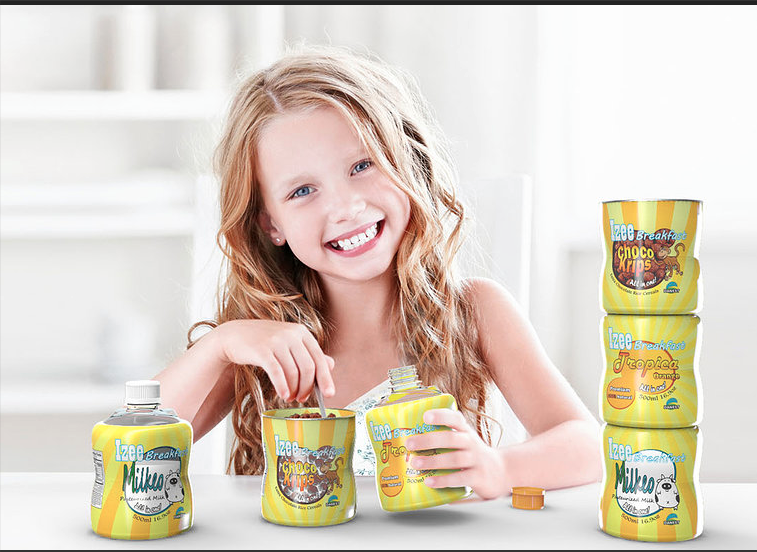
Bottleclips , patented and developed by BTC Concept company, is claimed to be the first stackable and lockable bottle launched on the market.
The bottle can be stacked and clipped to become a single packaging container , for example several different beverages.
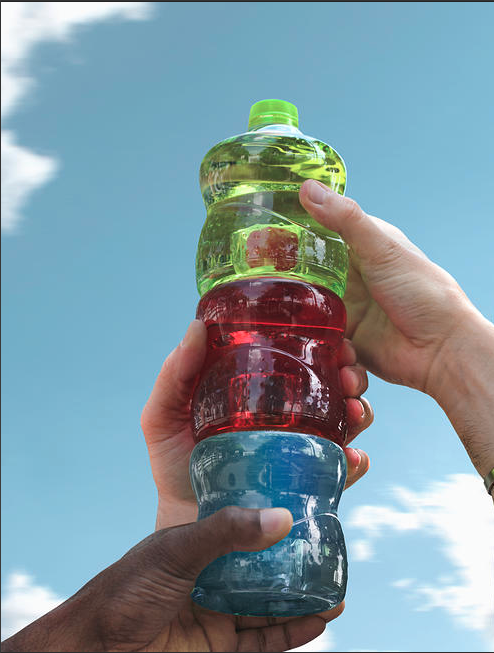
The Bottleclips concept was born from a simple question: How to save spaces in the fridge?
It was about filling a solution to optimize storage and fill spaces lost with conventional bottles,
Clipping bottles has emerged as e key feature which is practical and fun for use at home, at the office or when "on the go".
The main innovation at the heart of BottleClips is the "clipping system" that BTC Concept developed and patented internationally.
It is integrated to the bottle produced by injection blow moulding of PET, PE and PP.
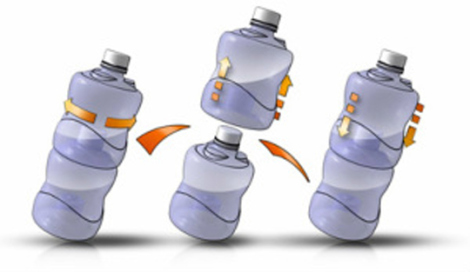
This new packaging concept is suitable for beverages and many other applications, allowing for the assembly of products, multi-brand or multi-flavours without overpack.
Thus, at the time of purchase, the consumer can customize the product by selecting, flavors.
The solution is adaptable and the volume of container can help be up to 1 litre with customizable shapes (identical or not).
[ add comment ] ( 382 views ) | permalink |




 ( 3 / 2249 )
( 3 / 2249 )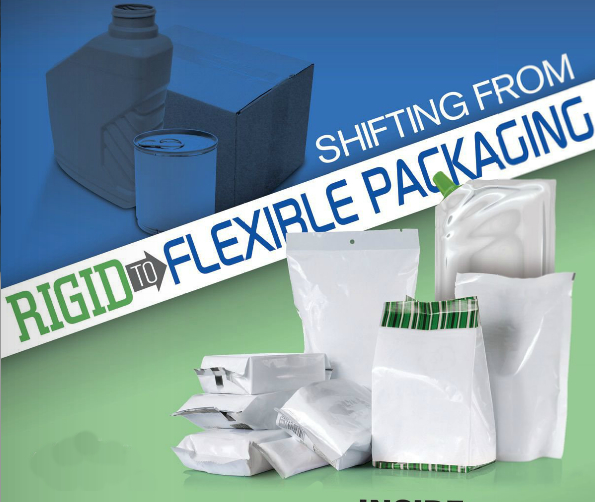
The way in which consumers view arid interact with packaged products is changing.
With a growing focus on convenience and sustainability, traditional pack types are being replaced by innovative and flexible options designed to meet these consumer needs.
The flexible packaging market is estimated to be worth $351 billion by 2018’ meaning that it is rapidly gaining market share from other sectors such as traditional rigid packaging.
There have been many exciting new product developments which have helped to demonstrate to consumers the true potential of flexible packaging.
Examples
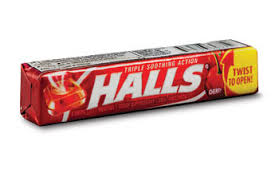
include the Halls "twist-off* Stick-pack converted by Sonoco & Co - a flexible package which allows one sweet to be dispensed without losing others - and the Savvy Green Laundry Detergent Pouch, which displays high-end graphics;and offers easy dispensation.
So, what sets these products apart from the rigid packaging we are more used to seeing on supermarket shelves?
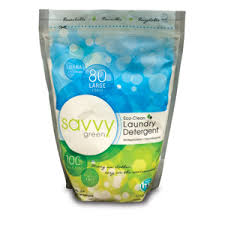
1. LIGHTWEIGHTING
The bottled water sector is a prime example of a market in which materials have gotten lighter and lighter overtime producing less waste.
However, manufacturers have now reached the stage where PET bottles cannot be made much lighter.
Therefore, the next step in this process is to replace plastic bottles with lightweight, flexible pouches.
This development has been gaining traction over the years, although widespread usage has not yet occurred. The primary reason for this has been issues with high-speed filling - while PET bottles can be filled at speeds of 1,500 packages per minute, the process of filling pouches fells behind at only 400 packages per minute.
However, some of the newer PET bottle-fiIIing technologies are designed to transport the bottle through the cycle via the neck, a breakthrough which will also allow the introduction of pouches using the same technology. This is forecast to occur as early as 2014’ and the use of pouches would allow water companies to reduce their packaging weight by 50%.
2. EASE OF DECORATION
Part of the total cost of any rigid package is the label, and these are applied as part of the filling process.
Labels are supplied from a different supplier than the bottles, meaning that they often become a bottleneck in the filling process.
With flexible packaging such as pouches, the converting of the pouch generally includes full printing features along with the lamination of the films if necessary.
This printing only marginally increases the cost of the pouch and has no effect on the filling process itself.
Printing options for flexible packaging are endless, and can be instantaneously changed if required
Another key decorating feature is the printing of security or brand identity graphics, which is just being developed for flexible packaging.
The challenge associated with this new technology is: how can security graphics be included in the packaging design without making it obvious to the potential counterfeiter? Solutions include pigment additives which only appear under certain lighting and inks which disappear and reappear depending on environmental conditions.
Such technology simply isn't possible with rigid alternatives.
3. BARRIER PROPERTIES
One of the main advantages of flexible packaging over rigid packaging is the ability of the company to "dial-in" the appropriate barrier for the product and end-use.
Many products, such as juices, wines and milk, require a reasonable oxygen barrier.
Bottles made from PET, glass or multi-layer paperboard laminates provide a barrier for all products whether it is required or not.
A flexible package can be supplied with barrier properties which can provide anything from moisture and aroma protection to essentially tine same barriers as glass. Aluminium foil has been used for many years as the ultimate flexible barrier material, although its properties are compromised by the most recent flexible packaging developments, such as stand-up pouches.
When creased in this way the foil can fracture, leading to pinholes which let in oxygen, water and light.
To combat this, new flexible materials such as styrene-acrylonitrile (SAN) have been developed as foil-replacement. SAN is tough even in thin layers, and recent production methods have improved the flexible properties of this resin.
4. PACKAGING VARIATION AND DISPENSING
Packages made from flexible plastic films can be made into practically any shape imaginable, and the inclusion of handles, fitments and opening features is quite straightforward.
Today's pouches often have advanced dispensing functions such as screw-top caps and laser-scored tear features.
Flexible packaging can also be used to enhance rigid packs; an example being shrink labels used for plastic bottles. These labels not only provide attractive decoration features, but also additional levels of barrier protection against oxygen or light.
Other key technical developments include fitments for use with flexible packaging for liquids, with traditional dispensing taps leading to connecting valves, one-way dispensers and pop-up straws.
Connecting valves allow consumers to connect a pouch with dishwashing soap directly to the appliance, so the proper amount of detergent is dosed every cycle and no clean-up is required.
5. LARGER SIZES
As technology has improved, the flexible packaging market size has increased and the ability to produce packaging of ever-larger sizes has become possible. Larger retail flexible packages are now becoming the norm as consumer packaged goods and retail outlets alike take advantage of larger-format packaging. For example, the classic paperboard carton and unprinted flexible liner used for dry cereals is rapidly being replaced with flexible pouches incorporating high-end graphics and easy to reclose features. These packages are typically much larger.

Kraft Food's YesPack for salad dressings and other condiments recently won gold at the Global Packaging Association Awards.
Incorporating many of the benefits of flexible packaging into a large format package for food-service liquids, the pouch makes it easy to dispense product, and makes sure every last drop is utilised.
We can expect to see many new types of pouches being introduced for large format liquid packaging as consumers better understand the benefits and converters develop new technologies to their fullest.
From Smith Pira Report
"The Future of Global Flexible Packaging to 2018"
[ add comment ] ( 37 views ) | permalink |




 ( 3 / 2216 )
( 3 / 2216 )
Packaging plays an important role on the Web. Here are five principles for success.
How does our packaging look and work online?” It is a question that we’re hearing more often from our clients, in categories ranging from diapers to dog food. And certainly, it is a relevant issue, given the growing impact of Web-based shopping — and shoppers’ increasing tendencies to do “homework” online prior to visiting the store.
PACKAGING’S ROLE IN ONLINE SHOPPING
With that thought in mind, Perception Research Services (PRS) recently conducted a series of in-depth interviews to observe and discuss online shopping for health and beauty products (such as vitamins, OTC medications, cosmetics, and hair and skincare products). The research process included using PRS Mobile Eye-Tracking to document what these shoppers did — including what they saw and missed — as they went through typical online shopping trips. Afterward, we conducted follow-up interviews to better understand their thoughts and reactions.
Overall, we found that packaging plays a very important role in the Web-based shopping experience, albeit in ways that vary somewhat from the brick-and-mortar world. This is due to several key factors:
1. The different stages of the Web-based shopping experience
Web-based shopping has several distinct phases (search and “de-selection,” product comparison/selection, confirmation and fulfillment) that place different demands on packaging.
* In nearly all cases, the package is a vital tool in the search and “de-selection” process, as initial searches inevitably lead to a myriad of items to consider — and online shoppers usually rely on packaging images for brand identification and product confirmation.
* Later, once shoppers form a smaller consideration set, the package also plays a central role in product and brand comparisons, which often take place across screens and/or websites. While the Web allows for additional information delivery (beyond the pack), our eye-tracking research reveals that shoppers typically rely on the pack for feature and benefit communication.
* Once shoppers place a product in an online shopping cart, we see them frequently double-checking the pack to confirm correct product selection, prior to the final purchase.
* Finally, with online shopping, packaging also plays an important role in the fulfillment process. When the product arrives at home, the package reassures the shopper that it is genuine (not a knockoff). Thus, in addition to providing product protection, the outer shipping container can be valuable as a branding and marketing vehicle. In fact, it can also add value to the online shopping experience by sharing additional information, product samples, etc.
2. The lack of shelf context
In some ways, the package may be more critical online, because there’s a more level playing field than in physical stores: Both big and small brands are typically represented by one SKU — and larger brands find it harder to create billboards that dominate shoppers’ attention and become self-fulfilling in maintaining their category leadership.
In addition, because Web-based shoppers typically see only one SKU at a time (rather than a larger brand at shelf), they often struggle to find a particular variant within a line (form, formulation, scent, etc.). In fact, we find that some shoppers simply purchase the first variant they encounter, without realizing it isn’t their usual variety.
3. The lack of tactile interaction
Because shoppers can’t physically pick up packages — and small packages often look similar to larger ones in an online context — shoppers have difficulty gauging product quantity, particularly when quantity information is not always readily apparent. Predictably, this sometimes leads to price/value concerns, as shoppers focus on price alone.

FIVE PRINCIPLES FOR ONLINE SUCCESS
Given the uniqueness of the online shopping context, marketers and designers will be well-served to keep several core objectives in mind as they develop and adapt their packaging for the Web:
1. Foster brand recognition. Create a distinctive and memorable set of visual equities, via the package shape, color and/or graphic elements, to foster immediate brand recognition online.
2. Support a quality impression. Utilize high-resolution digital images of the package, to promote a quality brand/product impression. Also, remember to display the packaging (primary and/or secondary) that is most important to shoppers.
3. Clearly convey quantity. Use simple and legible copy, particularly related to size/quantity, to ensure the right price/value perception.
4. Facilitate product comparisons. Find ways to quickly show the relevant product range, so as to help shoppers pick the right product for them.
5. Add value with the shipper. Use the outer container to provide brand reassurance and add value at the fulfillment stage.
By following these principles and understanding the online shopper, companies can help avoid potential barriers to purchase, create stronger synergy between online and in-store efforts, and position themselves to “win at retail” in this growing channel.
Edit by Brand Packaging
Jonathan Asher
April 6, 2014
[ add comment ] ( 52 views ) | permalink |




 ( 3 / 666 )
( 3 / 666 )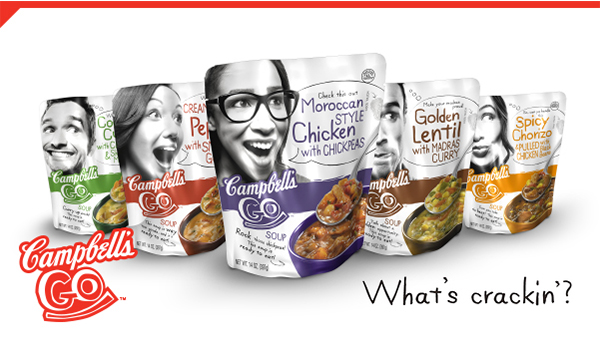
U.S. growth in Stand-up Pouches (SUP) has lagged behind Europe and other markets for years because their higher costs and poor stacking characteristics have made them less attractive compared to alternatives such as flat pouches and rigid packaging.
Stand-up pouches have traditionally been reserved for single-serve products in categories such as food & beverage.
But that’s changing as advances in barriers, laminations and fitments are expanding the number of applications for stand-up pouches.
They now have greater shelf stability and can be produced in a greater variety of sizes, shapes and closures. And by holding increased weight, they can now be used for contents that are greater than five pounds.
The broad array of stand-up pouch capabilities is especially relevant for consumer packaged goods (CPG) companies looking to differentiate their products in an increasingly crowded marketplace. When Campbell’s launched its new Campbell’s Go soups brand to target the Millennial generation, it replaced its iconic metal soup cans with stand-up pouches covered with vibrant images to attract their 18-to-34-year-old target segment.
The new Campbell’s Go brand is playing a key role in boosting the company’s soup sales. Dole, Ocean Spray and other food brands are also increasing their adoption of Stand-up pouches.
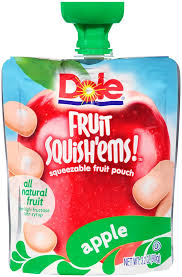
And the advantages of Stand-up pouches continue to add up, as some industry leaders note that they can be up to 95% lighter than rigid containers and reduce some product footprints by 10%.
These benefits help to trim transportation costs due to lighter shipments along with packaging material costs, and help brands increase the number of products that can be stocked on limited shelf space.
Based on our work in the packaging industry, we expect that the estimated $1-1.5B U.S. market for stand-up pouches will see high single-digit annual growth domestically during the next five years.
This diverse segment includes traditional (standard) Stand-up pouches with either fitments or substrates, as well as separate retort and aseptic offerings.
Segment growth opportunities here correlate with each category’s level of differentiation – from 78% CAGR for aseptic to 17% CAGR for standard stand-up pouches with fitments between 2013-2017 (see Figure 1).
Aseptic packaging presents compelling fundamentals; however filling speed limitations will likely place a ceiling on this market.
Demand for retorted food and pet food will keep the market growing for this shelf-stable packaging.
Additionally, stand-up pouches that include fitments (spouts, handles, etc.) and substrates (with growing usage of pouches for high-end and organic products) also have healthy growth trajectories.
The need for specialized stand-up pouch manufacturing equipment can create financial barriers to enter these new product markets.
As a result, this market includes a handful of large players that provide a suite of packaging options, along with mid-sized and smaller companies that primarily specialize in one or two capabilities.
However, given the demand characteristics for stand-up pouches, we believe that CPGs will need more suppliers with scale who can offer products in multiple segments.
Figure 1

Source : Strategic Packaging Trends
L.E.K. Consulting/Executive Insights Vol. XV, Issue 2
Written by Thilo Henkes and Carol Wingard
[ add comment ] ( 31 views ) | permalink |




 ( 3 / 2299 )
( 3 / 2299 )
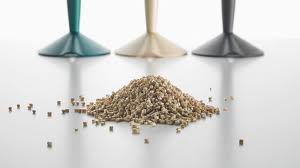
Bio-on nasce in Emilia Romagna, un territorio particolare che unito alle valide competenze delle persone che vi operano, rappresenta una grande occasione nella realizzazione pratica di progetti complessi. Per la prima volta, si è iniziato ad utilizzare la materia prima presente localmente (scarti delle barbabietole). Nascono così i PHAs (Polidrossialcanoati). Ecco la nuova sfida per il futuro. Ottima plastica (poliesteri lineari) prodotta da scarti della lavorazione agricola. Un processo unico, ancora poco noto, con la possibilità di sfruttare appieno la grande esperienza chimica italiana per costruire un grande business mondiale che già da ora ha grandi richieste. Bologna è da sempre considerata la capitale del packaging (macchine automatiche). Bio-on partecipa attivamente alla diffusione della nuova tecnologia per produrre PHAs osservando rigidamente la convenienza nei costi di produzione e lo sviluppo di un LCA rispettoso dell'ambiente: Plastica completamente biologica. Bio-on collabora con aziende in tutto il mondo. Licensing industriale per produrre PHAs di nuova generazione. Bio-on attraverso il brand MINERV-PHA™ opera in tutto il mondo, principalmente utilizzando scarti della lavorazione di barbabietole e canna da zucchero per produrre PHAs (Polidrossialcanoati).
Polyhydroxyalkanoato o PHAs sono un poliestere lineare prodotto in natura da una fermentazione batterica di zucchero. Più di 100 differenti monomeri possono essere uniti da questa famiglia per dare vita a materiali con proprietà estremamente differenti. Possono essere creati materiali termoplastici o elastomerici, con il punto di fusione che varia da 40 a oltre 180°C. MINERV-PHA è un biopolimero PHA ad elevata prestazione. MINERV-PHA ha ottime proprietà termiche. Attraverso la caratterizzazione è possibile soddisfare esigenze produttive da -10°C a +180°C. Il prodotto è particolarmente indicato per la produzione di oggetti attraverso metodi di produzione ad iniezione o estrusione. Sostituisce inoltre prodotti altamente inquinanti come PET, PP, PE, HDPE, LDPE.
BIODEGRADABILITA' NATURALE IN ACQUA
Il prodotto MINERV-PHAaccentua il suo fattore di biodegradabilità in acqua batteriologicamente non pura. Questo tipo di biodegradazione dei polimeri rappresenta il "futuro" della biodegradabilità mondiale. La scomparsa naturale e in pochi giorni di un bio polimero in acqua batteriologicamente non pura (es.: fiume) è un risultato raro e molto difficile da ottenere. MINERV-PHA è il primo bio polimero ottenuto da co-prodotti dello zucchero ad ottenere questo importante risultato. In 10 giorni all'interno di normale acqua di fiume MINERV-PHAsi trasforma in acqua di fiume oppure in acqua di mare. Il futuro della biodegradabilità è rappresentato dall'utilizzo di metodi poco costosi e naturali come la biodegradabilità in acqua. La biodegradabilità in acqua presente in natura (es. fiume) è il mezzo più semplice per distruggere e recuperare gli elementi. Ciò consente di agire sui materiali senza manutenzione (movimentazione trasporto e distribuzione). La biodegradabiltà in acqua è più vantaggiosa rispetto alla pur interessante biodegradabilità in terreno (compost). Il processo è sempre lo stesso: decomposizione dalla natura, o meglio, dai batteri. In acqua si sviluppa a temperatura ambiente e senza nessuna forzatura, per decomposizione, consentendo ad un buon bio polimero la biodegradazione completa in pochi giorni. Se uniamo queste caratteristiche alle "performance" iniziali del biopolimero (resistenza, flessibilità, stampabilità) si riesce facilmente a comprendere la qualità finale del prodotto. I PHAs sono inoltre, le uniche plastiche biodegradabili in mare.
Il PHAs REALIZZATO DA BIO-ON
Attraverso MINERV PHAs (Polidrossialcanoati messi a punto utilizzando Barbabietole) Bio-on ha individuato la possibilità di produrre industrialmente una nuova famiglia di poliesteri biodegradabili e naturali ottenuti dalla barbabietola da zucchero. Il logo MINERV PHAs contraddistingue il prodotto che sarà di volta in volta caratterizzato e protetto nel suo grado di caratterizzazione e conseguentemente commercializzato o licenziato a terzi. Polyhydroxyalkanoato o PHAs è un poliestere lineare prodotto in natura da una fermentazione batterica di zucchero. Più di 100 differenti monomeri possono essere uniti da questa famiglia per dare vita a materiali con proprietà estremamente differenti. Possono essere creati materiali termoplastici o elastomerici, con il punto di fusione che varia da 40 a 180°C. MINERV-PHA è un bio polimero PHAs ad elevata prestazione. minerv le "sfere" di colore bianco rappresentano il bio polimero minerv PHAs ottenuto da Barbabietole da zucchero. Questi elementi sono il risultato dell'accrescimento dei batteri nutriti dai sughi di barbabietola. Nella fase successiva avviene il processo di recovery (recupero di PHAs) ove vengono recuperati i Polidrossialcanoati e separati dal resto del materiale organico della cellula. Tutti i materiali di scarto (modeste quantità) vengono reinseriti nel ciclo produttivo iniziale per nutrire nuove colonie batteriche assieme ai sughi intermedi di barbabietola (Patent esclusivo Bio-on).
[ add comment ] ( 124 views ) | permalink | related link |




 ( 3 / 2634 )
( 3 / 2634 )

 Calendar
Calendar